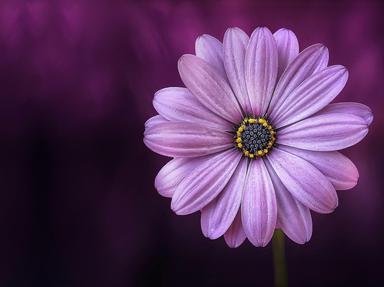Quiz Answer Key and Fun Facts
1. This towering invader from the Caucasus Mountains doesn't want to kill you. It has much grander ambitions. Heracleum mantegazzianum has been slowly marching westward in a slow-motion bid for world domination and the pursuit of human misery. Known for growing up to 17 feet tall (5 meters) and leaving painful skin sores in its wake, it's become an invasive menace across Europe and North America. What is it?
2. This plant, Conium maculatum, has no interest in world domination. It just wants you dead. Every part of it is poisonous, especially if ingested, and its stems can remain lethal long after the plant itself has withered away. Native to Europe and North Africa, it has since crept its way into North America and beyond, spreading its toxic agenda with discrete menace. What deadly plant, growing up to 8 feet (2.4 meters), was once used by the ancient Greeks to execute prisoners?
3. Atropa belladonna has such a lovely name. "Bella donna" means "beautiful woman" in Italian, but be not fooled! In English, that beautiful woman will kill you dead if you try to snack on her berries. A member of the same botanical family as tomatoes, potatoes, and eggplant, this deadly shrub is native to Europe and can grow up to about 5 feet tall (1.5 meters). What plant are we talking about?
4. In Spanish, this cute little fruit goes by the name "manzanilla de la muerte." Yup. Let me introduce you to my friend, the "little apple of death". Hippomane mancinella is part of the spurge family and native to northern South America and tropical regions of North America. What do we call this tree that can grow up to 50 feet (15 meters) tall and that delights in so many ways?
5. This shrub has been cultivated around the world in temperate and subtropical regions, mostly because people think it's pretty. And it is! Just don't eat the leaves, unless you'd like your last words to be "but it looked so harmless." What plant, also known as Nerium or Rosebay, can reach heights of 7 to 20 feet (2 to 6 meters) and clearly resents all the love and admiration we give it?
6. An invasive species that's taken over much of the southern hemisphere, Abrus precatorius harbors a deep, seething hatred for humanity, especially those that think shiny red beads make good snacks. Just one seed can kill an adult human, assuming they're reckless or inebriated enough to chew on it. Despite that, its seeds are used in jewelry and percussion instruments. Also known as crab's eye, what's the more common name of this flowering vine?
7. This tree doesn't even pretend to like you. Cerbera odollam wears its malice on its leaves. Known as the "suicide tree," it has been responsible for thousands of deaths, particularly in southern Asia, the Pacific islands, and parts of Australia. Its fruit looks harmless enough - like a small green mango - but a single seed inside is enough to kill a human. What's this tropical menace more commonly called?
8. Aconitum napellus is a flowering plant that grows to about 3 feet (1 meter) tall and has nothing but sinister intentions. And yet, despite its hatred for all things human, people - including my wife - still plant it in their gardens because the flowers are just so darn pretty. Whether ingested or merely absorbed through the skin, this plant will absolutely try to ruin your day. Which of the following is one of its common names?
9. Dendrocnide moroides isn't trying to kill you. It's not bent on global conquest, either. No, this particular Australian horror is more of a local sadist. Known as the "stinging bush," it's native to Australia and Indonesia, where it lives among all the other venomous nightmares that call that region home. The mind-bending pain can last for days or even weeks, and in some cases has landed people in the hospital. What heart-shaped-leafed plant with small fruits and a bad temper are we talking about?
10. Ricinus communis is a flowering perennial and yet another deeply unpleasant gift from the spurge family. Native to the southern and eastern coastal regions of the Mediterranean, as well as parts of India and East Africa, it has - like most villainous plants - spread itself far and wide, especially in tropical climates. Its seeds are called beans, but they aren't beans, and inside each unbean is ricin, one of the most potent natural toxins known to man. The (ricin-free) oil from the seed has long been used as a laxative with famously mixed results. What plant is this?
Source: Author
JJHorner
This quiz was reviewed by FunTrivia editor
agony before going online.
Any errors found in FunTrivia content are routinely corrected through our feedback system.
